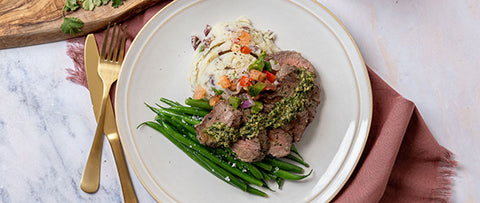At some point or another I'm sure you’ve heard someone say “eat more fiber.” That’s because fiber is your friend! Your friend that does way more than just make you poop. While fiber does do wonders for your digestive tract by stimulating your intestines and increasing regularity, It also aids in reducing cholesterol, maintaining a healthy weight, and promoting blood sugar control.
What is fiber?
Simply put, fiber is a carbohydrate that your body cannot digest. Unlike fat, protein, and other carbohydrates which your body absorbs for various uses, fiber passes through your stomach, small intestine, colon, and out of your body. Fiber can be broken down into 2 categories, soluble and insoluble fiber.
Soluble fiber absorbs in water and forms a gel that protects gastrointestinal muscles around the colon. It slows down digestion and can help decrease blood sugar levels and keep you feeling fuller longer. Soluble fiber is usually found in beans, oats, peas, citrus fruits, apples, carrots and barley.
Insoluble fiber does not dissolve and it stays relatively intact as it passes through your body. It promotes movement through your digestive system and softens stools which can help with constipation and irregularity. Insoluble fiber can be found in whole wheat flour, nuts, beans, vegetables such as potatoes, cauliflower, green beans, and wheat bran.
High fiber foods
Women should aim to incorporate 20-25 grams of fiber a day into their diet, while men should aim for 30-38 grams of fiber a day. Fiber can be found in many different foods;
Fruits and vegetables (per serving)
- Apples, oranges, bananas, pears and strawberries (3-5 grams of fiber)
- Peas, broccoli, potatoes with skin, brussels sprouts, and turnip greens (4-8 grams of fiber)
Whole grains
- Whole wheat pasta (6 grams of fiber)
- Quinoa (5 grams of fiber)
- Barley (6 grams of fiber)
- Oatmeal (5 grams of fiber)
- Brown rice (3.5 grams of fiber)
Beans, nuts, and seeds
- Lentils (15.5 grams of fiber)
- Black beans (15 grams of fiber)
- Chia seeds (10 grams of fiber)
- Almonds (3.5 grams of fiber)
Ways to incorporate more fiber
Adding more fiber into your diet is relatively easy and can be done through small changes;
- Eat more fruits and vegetables- Fruits and vegetables are high in fiber as well as other essential vitamins and minerals. It is suggested that you get at least 5 servings a day of fruits and vegetables. Add extra veggies to your meal or some fruit for healthy snacking in between meals.
- Get an early start- Starting your day with a high fiber breakfast will not only give you a head start on your fiber intake for the day, it will also help to give you energy and keep you full until lunch time. Oatmeal, high fiber whole grain cereal, and homemade breakfast bars are great high fiber breakfast ideas.
- Switch to whole grains- Replacing at least half of your current grains such as white rice and pasta with whole grains like brown rice, quinoa, and whole wheat pasta are easy swaps you can incorporate into your favorite meals.
Fiber plays an important role in your digestive system and overall health. It is important to make sure you are getting your recommended amount of fiber daily as it can also help you maintain a healthy weight, promote lower blood sugar levels, and reduce cholesterol. Fiber can either be soluble or insoluble. The amount of fiber in foods varies so in order to incorporate more fiber into your diet choose high fiber foods such as fruits, vegetables, whole grains, beans, nuts, and seeds.






